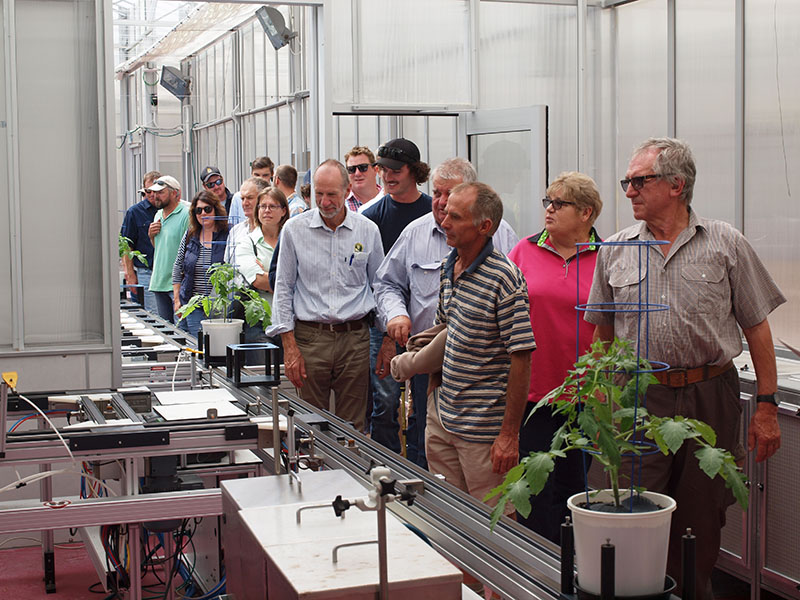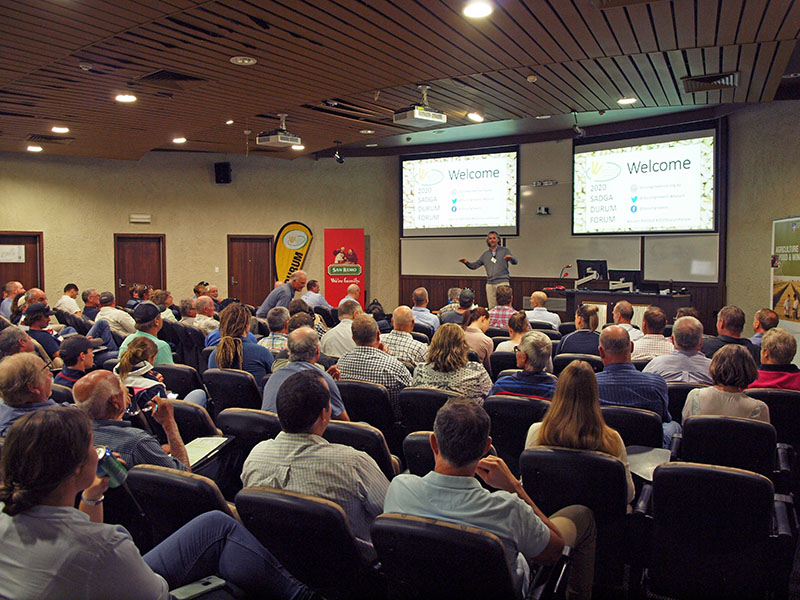This year SADGA set the bar high with the 2020 Durum Tours and Forum held at The Waite Campus with the support of San Remo and the University of Adelaide.
Over 90 people, including a large percentage of growers, registered to tour the San Remo Mill and Pasta Factory, the University’s Waite Campus, and attend the all-important Durum Forum at the Charles Hawker Conference Centre. A pasta dinner with special guest Deanna Lush of AgCommunicators speaking about “Earning Trust with Our Community” completed the day’s event.

For the first time in 13 years, San Remo opened its doors to growers and industry to tour both the Mill and the Pasta Factory. The tour provided an opportunity to see firsthand the “paddock to plate” process. The factory tour covered the five story-high Mill where commercial agitators at the top of the building grade the durum before distributing to the lower floor rollers for milling into the semolina that is used for pasta production.
As Mill Manager John Stuart explained, “every component of the seed delivered has a use, and by products not used for pasta production is pelleted into a high protein stock feed”. Moving to the pasta factory, growers and other stakeholders took in the enormity and capacity of the machines that ran the length of the room, making products such as CousCous and pasta of all shapes and sizes. The extrusion, cutting, drying and packaging components of the operation were all on display.
Back at the Waite Campus, research is an integral part of growing durum and growers are always keen to ensure that they are kept abreast of the latest developments from those that are in the industry who are conducting the research. Professor Jason Able (University of Adelaide), Dr Hugh Wallwork (SARDI) and other University and SARDI staff, gave insight into the time taken and the breeding process that is involved in developing a new durum variety which has attributes such as high yield potential, a good disease resistance package and excellent quality.

Attendees at the Durum Forum tour the Plant Accelerator at the Waite campus
Highlights of the Waite Campus tour included the Plant Accelerator, where growers learned about the many and varied ways in which researchers capture data and interpret plant development, one trait at a time.
Semi-automation and the process of marker assisted selection has also been used for several years in the durum breeding program, and as explained on the Waite tour, the power of this technology has meant that the breeding program can identify those breeding lines which carry a particular trait far faster than having to rely on slower field-based approaches. This ultimately results in a broader starting pool of potential future varieties constantly being screened for the ‘ideal’ combination of traits that will suit an ever-changing environment.
Dr Hugh Wallwork’s crown rot terraces were also on display during the Waite tour. Hugh explained that his approach enables significant volumes of germplasm to be screened than what would be possible in the field, thus again being able to fast-track potential ‘winners’ that can then be evaluated in the field through Jason’s trial network.
- Jason Able reported strong stability and very good yields across all environments for DBA Aurora, DBA Spes and yet unnamed possible breeding lines for future variety release.
- Dan Vater of AGT, reviewed the season in which new durums Bitalli and Westcourt were released and reported that the long term data of Bitalli, in particular, performed better when compared to DBA Aurora and other varieties out in the market.
- Fil Ciancio from San Remo stated that DBA Aurora from the University’s program has performed well across several tough seasons.
- Other talks from the 11 presented included Dr Ariel Ferrante on benchmarking Wheat and Barley using FV-Plus Frost Rankings; Dr Hugh Wallwork who presented a crown rot update; and Nick Jordan of Glencore who spoke aboout the global durum market.

The day was wrapped up with a forum dinner and guest speaker Deanna Lush of AgCommunicators who spoke about ‘Earning Trust in Our Community’.
SADGA would like to thank our sponsors for their support and in particular would like to sincerely thank San Remo for allowing us to visit and tour their factory and the University of Adelaide for guiding us around the grounds and research areas of The Waite Campus.


